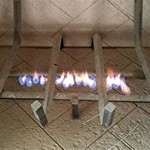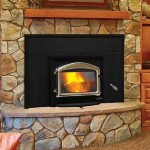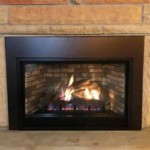Tudor Fireplace Mantels: A Legacy of Grandeur and Craftsmanship
Tudor fireplace mantels represent a significant element of architectural history, reflecting the opulence and design sensibilities of the Tudor period in England (roughly 1485-1603). These mantels, often imposing in scale and intricately detailed, served not only a functional purpose in housing a fireplace but also as a powerful statement of wealth, status, and refined taste within a home.
The Tudor era, characterized by a blend of late Gothic and early Renaissance influences, saw a shift in architectural design from purely defensive structures to more comfortable and aesthetically pleasing dwellings. The fireplace, previously a more utilitarian feature, evolved into a central focal point of the room. As a result, the mantelpiece became an opportunity for elaborate ornamentation and artistic expression. Understanding the characteristics and construction of Tudor fireplace mantels provides insight into the social and cultural values of the time.
Materiality and Construction
The materials used in the construction of Tudor fireplace mantels varied depending on the availability of resources and the wealth of the homeowner. Common materials included various types of stone, such as limestone and sandstone, particularly in areas where these materials were readily accessible. Oak wood was another frequently employed material, prized for its strength, durability, and the ability to be carved with intricate detail. Occasionally, more elaborate mantels would incorporate rarer and more expensive materials like marble or imported hardwoods, showcasing the owner's affluence.
The construction of these mantels was a labor-intensive process, often involving skilled craftsmen who specialized in stonemasonry and woodcarving. Stone mantels typically involved carefully hewn blocks of stone meticulously fitted together to create a substantial and visually impressive structure. Wooden mantels required expert carpentry skills to create the framework and then intricate carving to achieve the desired decorative effects. The joinery techniques employed were crucial for ensuring the structural integrity and longevity of the mantel.
The scale of Tudor fireplace mantels was often considerable, reflecting the large size of many rooms in Tudor homes. These imposing structures often extended from floor to ceiling or occupied a significant proportion of the wall. The sheer size of the mantel contributed to its visual impact and reinforced its role as a prominent feature within the room.
Decorative Motifs and Symbolism
Tudor fireplace mantels were not merely functional elements; they were canvases for artistic expression and the conveyance of symbolic meaning. Common decorative motifs included floral patterns, heraldic symbols, and religious imagery. The Tudor rose, a significant emblem of the Tudor dynasty, was a recurring motif, symbolizing the union of the House of York and the House of Lancaster. Coats of arms and family crests were also frequently incorporated, asserting the homeowner's lineage and social standing.
Renaissance influences led to the adoption of classical architectural elements, such as columns, pilasters, and pediments. These features added a sense of grandeur and sophistication to the mantel design. Human figures, often depicted in relief carvings, were also sometimes incorporated, adding a further layer of artistic detail.
The level of detail and intricacy in the carvings often reflected the wealth and status of the homeowner. Wealthier families could afford to commission more elaborate and detailed carvings, showcasing their refined taste and appreciation for artistry. The symbolism embedded within the decorations served to reinforce their social identity and convey messages of power, piety, and prosperity.
Evolution and Adaptation
The design of Tudor fireplace mantels evolved over time, reflecting changing architectural styles and influences. Early Tudor mantels tended to be more Gothic in character, with pointed arches and simpler decorative elements. As the Renaissance gained influence, mantels became more ornate, with classical motifs and a greater emphasis on symmetry and proportion.
The size and configuration of the fireplace itself also influenced the design of the mantel. Fireplaces became larger to accommodate the burning of larger logs, and the mantelpiece evolved to reflect this change. Some mantels incorporated features such as inglenook benches, providing a cozy seating area around the fire.
The legacy of Tudor fireplace mantels continues to inspire contemporary designers and architects. While true antique Tudor mantels are rare and valuable, reproductions and reinterpretations of Tudor designs remain popular. These modern adaptations often incorporate more contemporary materials and construction techniques while retaining the essential aesthetic characteristics of the Tudor style. The enduring appeal of Tudor fireplace mantels lies in their combination of grandeur, craftsmanship, and historical significance, making them a lasting testament to a pivotal era in English history.

Tudor Cast Stone Fireplace Mantel Omegamantels Com

Hand Carved Tudor Gothic Mantle Model Mfp174 Houston Tx Custom Imported Marble Fireplace Surrounds Stone Mantels

Tudor Artisans Architectural Stone Fireplaces

Tudor Cast Stone Fireplace Mantel Omegamantels Com

Tudor Arch Fireplace Mantel Surrounded By Paneling Built In Bookcases Artisans Home Style Homes Decor

Tudor Chimney Piece Rose Thistle Shields Including Hearth Haddonstone Usa

Chesney S London New York Fireplace Mantel

English Tudor Fireplace Mantel Styles Mediterranean Living Room Oklahoma City By Devinci Cast Stone Houzz

Tudor Cast Stone Fireplace Mantel Omegamantels Com

Tudor Marble Fireplace Mantels Aongking Sculpture








